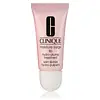What's inside
What's inside
 Key Ingredients
Key Ingredients

 Benefits
Benefits

 Concerns
Concerns

 Ingredients Side-by-side
Ingredients Side-by-side

Petrolatum
EmollientPolybutene
Polyglyceryl-2 Triisostearate
EmulsifyingHydrogenated Polyisobutene
EmollientTocopheryl Acetate
AntioxidantPvp
Emulsion StabilisingSilica
AbrasiveHydrogenated Castor Oil
EmollientPPG-51/Smdi Copolymer
Caprylic/Capric/Myristic/Stearic Triglyceride
EmollientButyrospermum Parkii Butter
Skin ConditioningSea Whip Extract
Skin ConditioningCeramide Ng
Skin ConditioningCholesterol
EmollientAstrocaryum Murumuru Seed Butter
EmollientCaprylic/Capric Triglyceride
MaskingEthylene/Propylene/Styrene Copolymer
C12-16 Alcohols
EmollientTetrahexyldecyl Ascorbate
AntioxidantButylene/Ethylene/Styrene Copolymer
Caprylyl Glycol
EmollientPalmitic Acid
EmollientHydrogenated Lecithin
EmulsifyingPetrolatum, Polybutene, Polyglyceryl-2 Triisostearate, Hydrogenated Polyisobutene, Tocopheryl Acetate, Pvp, Silica, Hydrogenated Castor Oil, PPG-51/Smdi Copolymer, Caprylic/Capric/Myristic/Stearic Triglyceride, Butyrospermum Parkii Butter, Sea Whip Extract, Ceramide Ng, Cholesterol, Astrocaryum Murumuru Seed Butter, Caprylic/Capric Triglyceride, Ethylene/Propylene/Styrene Copolymer, C12-16 Alcohols, Tetrahexyldecyl Ascorbate, Butylene/Ethylene/Styrene Copolymer, Caprylyl Glycol, Palmitic Acid, Hydrogenated Lecithin
Hydrogenated Polyisobutene
EmollientDimethicone
EmollientCetearyl Ethylhexanoate
EmollientMicrocrystalline Wax
Emulsion StabilisingCaprylic/Capric Triglyceride
MaskingPolyethylene
AbrasiveSilica
AbrasiveTrimethylolpropane Triisostearate
EmollientDimethicone/Vinyl Dimethicone Crosspolymer
Skin ConditioningKaolin
AbrasiveSynthetic Wax
AbrasiveBis-Diglyceryl Polyacyladipate-2
EmollientMica
Cosmetic ColorantCopernicia Cerifera Cera
EmollientStearalkonium Hectorite
Gel FormingPolyhydroxystearic Acid
EmulsifyingPentaerythrityl Tetra-Di-T-Butyl Hydroxyhydrocinnamate
AntioxidantPropylene Carbonate
SolventRosa Canina Fruit Oil
EmollientPassiflora Edulis Seed Acid
BleachingTocopherol
AntioxidantHydrogenated Polyisobutene, Dimethicone, Cetearyl Ethylhexanoate, Microcrystalline Wax, Caprylic/Capric Triglyceride, Polyethylene, Silica, Trimethylolpropane Triisostearate, Dimethicone/Vinyl Dimethicone Crosspolymer, Kaolin, Synthetic Wax, Bis-Diglyceryl Polyacyladipate-2, Mica, Copernicia Cerifera Cera, Stearalkonium Hectorite, Polyhydroxystearic Acid, Pentaerythrityl Tetra-Di-T-Butyl Hydroxyhydrocinnamate, Propylene Carbonate, Rosa Canina Fruit Oil, Passiflora Edulis Seed Acid, Tocopherol
 Reviews
Reviews

Ingredients Explained
These ingredients are found in both products.
Ingredients higher up in an ingredient list are typically present in a larger amount.
This ingredient is an emollient, solvent, and texture enhancer. It is considered a skin-softener by helping the skin prevent moisture loss.
It helps thicken a product's formula and makes it easier to spread by dissolving clumping compounds.
Caprylic Triglyceride is made by combining glycerin with coconut oil, forming a clear liquid.
While there is an assumption Caprylic Triglyceride can clog pores due to it being derived from coconut oil, there is no research supporting this.
Learn more about Caprylic/Capric TriglycerideHydrogenated Polyisobutene is a synthetic polymer. Polymers are compounds with high molecular weight. Hydrogenated Polyisobutene is an emollient and texture enhancer.
In one study, Hydrogenated Polyisobutene showed better skin hydration levels than Caprylic/Capric Triglyceride. As an emollient, it helps keep your skin soft and hydrated by trapping moisture in.
Hydrogenated Polyisobutene is often used as a mineral oil replacement.
Learn more about Hydrogenated PolyisobuteneSilica, also known as silicon dioxide, is a naturally occurring mineral. It is used as a fine, spherical, and porous powder in cosmetics.
Though it has exfoliant properties, the function of silica varies depending on the product.
The unique structure of silica enhances the spreadability and adds smoothness, making it a great texture enhancer.
It is also used as an active carrier, emulsifier, and mattifier due to its ability to absorb excess oil.
In some products, tiny microneedles called spicules are made from silica or hydrolyzed sponge. When you rub them in, they lightly polish away dead skin layers and enhance the penetration of active ingredients.
Learn more about Silica